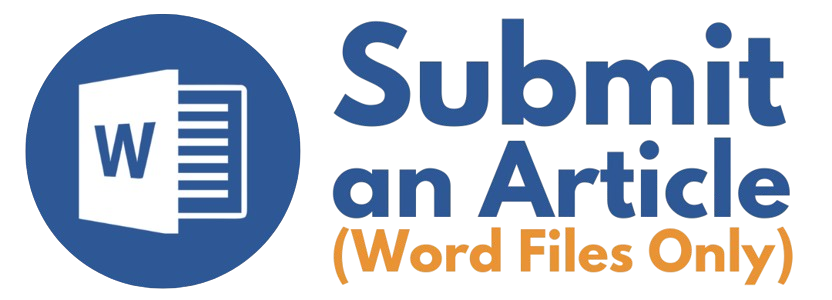FRAMING TRUMP: A METAPHORIC ANALYSIS OF IRANIAN MAINSTREAM NEWS
(1) International University of Malaya-Wales (IUMW), Malaysia
(*) Corresponding Author
Abstract
Donald J. Trump’s victory in the 2016 presidential election marked the beginning of a gloomy era for Iran-US relations which consequently brought about a series of economic and political consequences, most notably the international sanctions imposed on Iran. As the key player in these political affairs, Trump made several radical decisions involving Iran, provoking the Islamic regime’s harsh and insolent rejoinders which were directed at the US president’s personality. Being largely of a metaphoric nature, such negative remarks recurrently appeared across the state-run national media, constructing a particular social reality about the 45th President of the United States. This was in particular less challenging for the state, considering the general public in Iran had minimum knowledge about Trump before his election in 2016. Using Lakoff and Johnson’s theoretical framework, and investigating the use of metaphors in political news articles published in some of the government’s prominent online news agencies, this study reveals how such rhetorical devices are employed for framing Trump. Ultimately, the findings point to the idea that national media in Iran have craftily taken advantage of culturally embedded concepts to sway public perceptions against Trump, as part of the regime’s anti-west political agenda.
Keywords
Full Text:
PDFReferences
Abedinifard, M. (2019). Persian ‘Rashti jokes’: Modern Iran’s palimpsests of gheyrat-based masculinity. British Journal of Middle Eastern Studies, 46(4), 564-582.
Alimardani, M., & Michaelsen, M. (2021). Iran: Centralized control and tattered accountability. In S. Fengler, T. Eberwein, & M. Karmasin (Eds.), The global handbook of media accountability (pp. 298-307). London: Routledge.
Bahgat, G. (2017). US-Iran relations under the Trump administration. Mediterranean Quarterly, 28(3), 93-111.
Barker, C. (2016). Cultural studies: Theory and practice (5th ed.). London: Sage.
Berg, L. R. V., Wenner, L. A., & Gronbeck, B. E. (2004). Critical approaches to television (2nd ed.). New York: Houghton Mifflin College Division.
Burrell, N. A. (2017). Metaphor analysis. In M. Allen (Ed.), The Sage encyclopaedia of communication research methods (pp. 1017-1019). London: Sage.
Charteris-Black, J. (2004). Corpus approaches to critical metaphor analysis. London: Palgrave Macmillan. https://doi.org/10.1057/9780230000612
Choma, B. L., & Hanoch, Y. (2017). Cognitive ability and authoritarianism: Understanding support for Trump and Clinton. Personality and Individual Differences, 106, 287-291. https://doi.org/10.1016/j.paid.2016.10.054
Danesi, M. (2018). Of cigarettes, high heels, and other interesting things: An introduction to semiotics (3rd ed.). New York: Palgrave Macmillan. https://doi.org/10.1057/978-1-349-95348-6
Entessar, N., & Afrasiabi, K. L. (2019). Trump and Iran: From containment to confrontation. New York: Lexington Books.
Fowler, R. (2013). Language in the news: Discourse and ideology in the press. Abingdon: Routledge.
Hibbing, J. R., Smith, K. B., & Alford, J. R. (2014). Differences in negativity bias underlie variations in political ideology. Behavioral and brain sciences, 37(3), 297-307. https://doi.org/10.1017/s0140525x13001192
Lakoff, G., & Johnson, M. (1980). Metaphors we live by. Chicago: University of Chicago Press.
Matin, A. A. (2023). Crafting Enemy: Ideographs in Iranian political discourse. Proceedings of the International Conference on Communication and Media 2022 (i-COME 22), 3-16. Atlantis Press. https://doi.org/10.2991/978-2-38476-098-5_2
Moradifar, S., Omidi, A., & Ziabari, K. (2021). Iranian media coverage and views of the United States and Trump. In Y. R. Kamalipour (Ed.), Global media perceptions of the United States: The Trump effect (pp. 155-174). Lanham: Rowman & Littlefield Publishers, Inc.
Mumby, D. K., & Spitzack, C. (1983). Ideology and television news: A metaphoric analysis of political stories. Communication Studies, 34(3), 162-171.
Schmitt, R. (2005). Systematic metaphor analysis as a method of qualitative research. The qualitative report, 10(2), 358-394. https://doi.org/10.46743/2160-3715/2005.1854
Seltzer, L. F. (2016). Outrage meets outrageousness: The populist logic behind Trump's surprising popularity. Journal of Psychohistory, 44(1), 73-84.
Simon, S. (2018). Iran and president Trump: What is the endgame?. Survival, 60(4), 7-20.
Slutsky, P., & Gavra, D. (2017). The phenomenon of Trump’s popularity in Russia: Media analysis perspective. American Behavioral Scientist, 61(3), 334-344. http://dx.doi.org/10.1177/0002764217693281
Todd, Z., & Harrison, S. J. (2008). Metaphor analysis. In S. N. Hesse-Biber & P. Leavy (Eds.), Handbook of emergent methods (pp. 479-493). New York: The Guilford Press.
Wodak, R. (2006). Mediation between discourse and society: Assessing cognitive approaches in CDA. Discourse Studies, 8(1), 179–190.
DOI: https://doi.org/10.24071/ijhs.v7i1.6139
Refbacks
- There are currently no refbacks.
Copyright (c) 2023 Alireza Azeri Matin

This work is licensed under a Creative Commons Attribution-ShareAlike 4.0 International License.
Indexed and abstracted in:
IJHS Sinta 3 Certificate (S3 = Level 3)
International Journal of Humanity Studies (IJHS) has been nationally accredited Sinta 3 by the Ministry of Education, Culture, Research and Technology of the Republic of Indonesia based on the decree No. Surat Keputusan 158/E/KPT/2021. Validity for 5 years: Vol 4 No 1, 2020 till Vol 8 No 2, 2024

This work is licensed under CC BY-SA.
Creative Commons Attribution-ShareAlike 4.0 International License.
p-ISSN: 2597-470X (since 31 August 2017); e-ISSN: 2597-4718 (since 31 August 2017)
Notice: The opinions expressed in this publication are those of the authors. They do not purport to reflect the opinions or views of the editorial team or publishers.
International Journal of Humanity Studies (IJHS) is a scientific journal in English published twice a year, namely in September and March, by Sanata Dharma University, Yogyakarta, Indonesia.


















